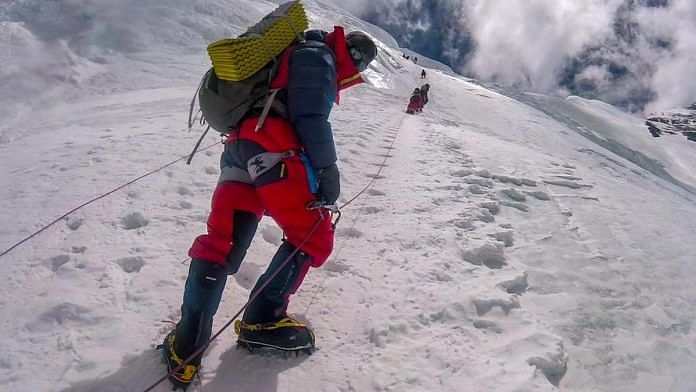New Delhi: To climb Mount Everest is a brave feat by itself. To climb Everest during a packed season where reaching the summit involves a wait of over an hour near the top, in conditions that can kill you in minutes, is simply a challenge to fate.
Parth Upadhyay, 24, of Mumbai was one of the climbers caught in a “traffic jam” at Everest last month, which the world witnessed through a viral photograph.
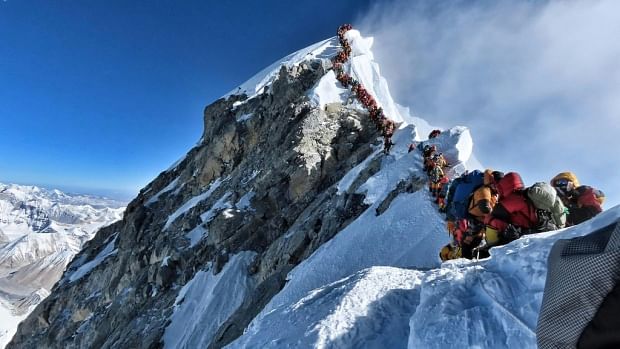
Having accomplished the ascent in a deadly season that saw 11 mountaineers perish, Upadhyay told ThePrint that he had survived the climb by the skin of his teeth.
“Surviving the wait (near the summit) is one of the most crucial parts of the journey,” Upadhyay said. “I was made to wait for 1.5 hours, chest-to-chest, stuffed in my puffy jacket, waiting for my turn… I was constantly worried about frostbites on that icy rocky mountain and feared passing out,” he added.
“Many people sleep due to over-exhaustion and are unable to wake up, the brain is simply unable to revive,” he added.
Also read: Mount Everest’s deadly toll has a commercial solution
On to the ‘death zone’
The world’s highest mountain, Mount Everest towers 8,848 metres above the sea level, with the final 1,000 or so metres of the ascent referred to as the ‘death zone’ by climbers: The low oxygen and temperature levels at this height can cause organ failure and frostbite, apart from dizziness, delusions, hallucinations, loss of consciousness, and even death due to hypoxia.
At a height beyond 8,200 metres or 27,000 feet, surviving every minute is a challenge.
“It takes a lot more than just good health and a basic certificate to face the ‘death zone’,” Upadhyay told ThePrint, saying many of the deaths were avoidable.
Shubham Kaushik, 23, who summited the Everest in 2013, said the meaning of “climbing a mountain has changed significantly in the last couple of years”.
“For some, it’s the ultimate standard of personal excellence, while for others, it’s cool content for their Instagram. The race of becoming ‘first’ or ‘youngest’ of everything has taken over people and often leads to loss of life on the mountain,” he added.
“Most climbers often tend to underestimate the grandeur of the climb… I personally know people who went to climb Everest without any training and failed on the mountain,” he said.
According to climbers, the ascent of many such people is facilitated by Nepal, a nation that relies heavily on the revenue generated from tourism centred on the mountain.
Each permit for Everest costs $11,000 or Rs 8 lakh from both China and Nepal, home to the two approaches to the mountain, but while the former restricts the number of climbers each season to 300, including the sherpas, the latter has no such limits.
China also requires climbers to furnish certificates proving they have climbed heights of 6,000 m and 7,000 m before, while Nepal only seeks a basic mountaineering certificate.
Nepal issued 381 permits this year compared to China’s 144: Each climber is supposed to be accompanied by a sherpa, which means over 760 people attempted the Everest summit this year from the Nepalese side alone.
“Nepal, being a developing nation, heavily relies on the revenue generated from the permits, unlike China. Obtaining a permit for Everest in Nepal is relatively easy,” said Kaushik.
“As long as you’re willing to pay the fees, you’ll get one. There’s no cap… which is what causes traffic jams on the mountain. China, on the other hand, has a close grip on the permits issued every year. So, as long as money is the driving factor here, people will keep pushing themselves and more lives will be lost,” he added.
Upadhyay, who climbed from the Chinese side, told ThePrint that traffic jams near the Everest summit were now a regular occurrence.
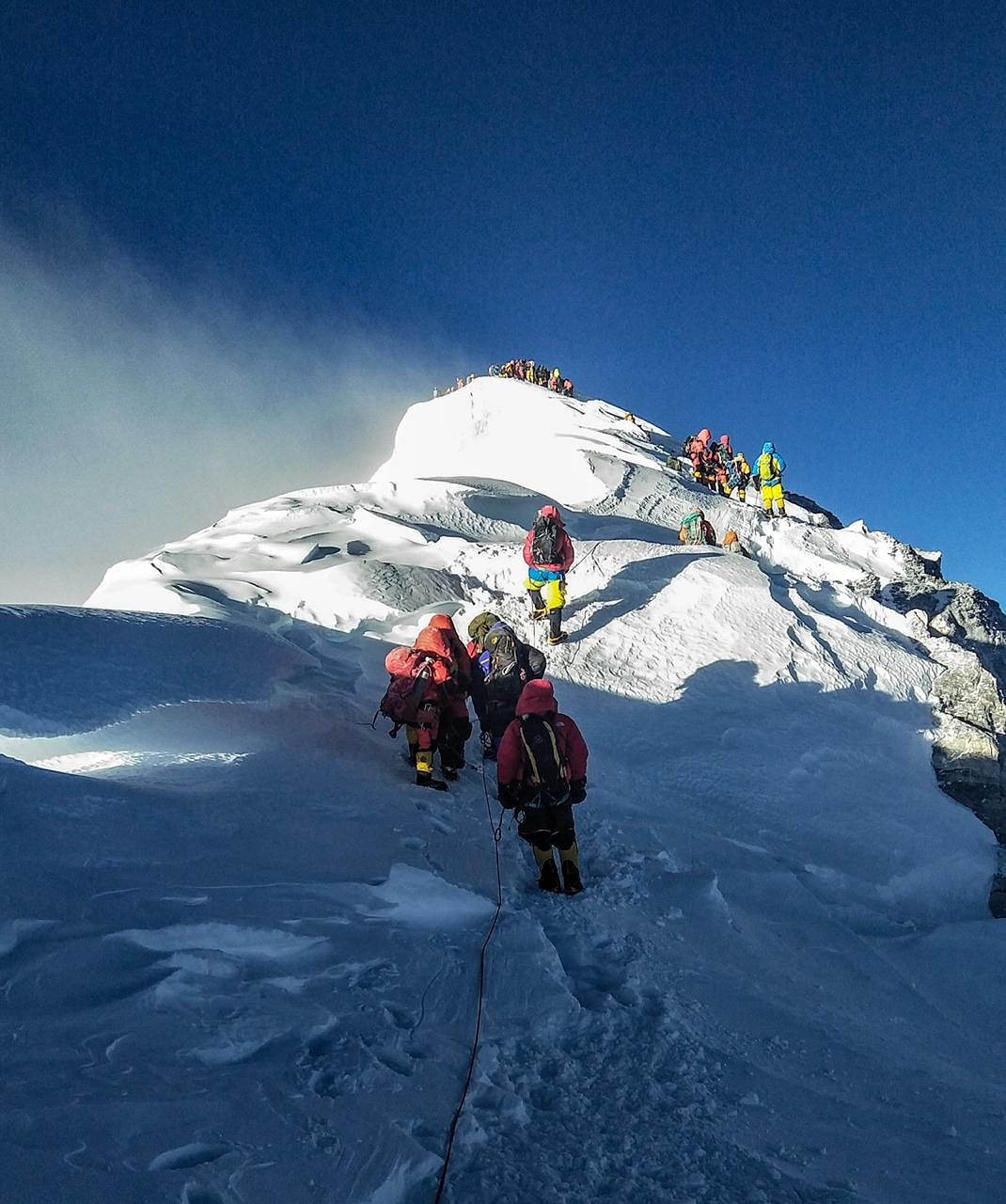
“It has come to light just now… The increasing number of rookie climbers on Everest pose a threat to all. Since there is only one route marked, one slow climber causes massive delays for others. And this has been the most overlooked issue by Nepal,” he added.
Also read: Himalayan fossil of adolescent’s jaw may explain how Tibetans, Sherpas master mountains
A shorter season
The 2019 Everest climbing season was shorter than other years’, stretching just three-four days compared to the 11-12-day window usually available — which, perhaps, worsened the jam at the summit this year.
The race to the summit is driven by the weather. Through much of the year, a powerful jet stream surrounds the Everest, marked by winds of around 120 km/hr, making it nearly impossible to climb the mountain. During the climbing window, the winds drop to speeds of 40km/hr.
“The critical problem faced this year was the number of people trying to ascend at the same time and clipped to the same safety line,” said Upadhyay.
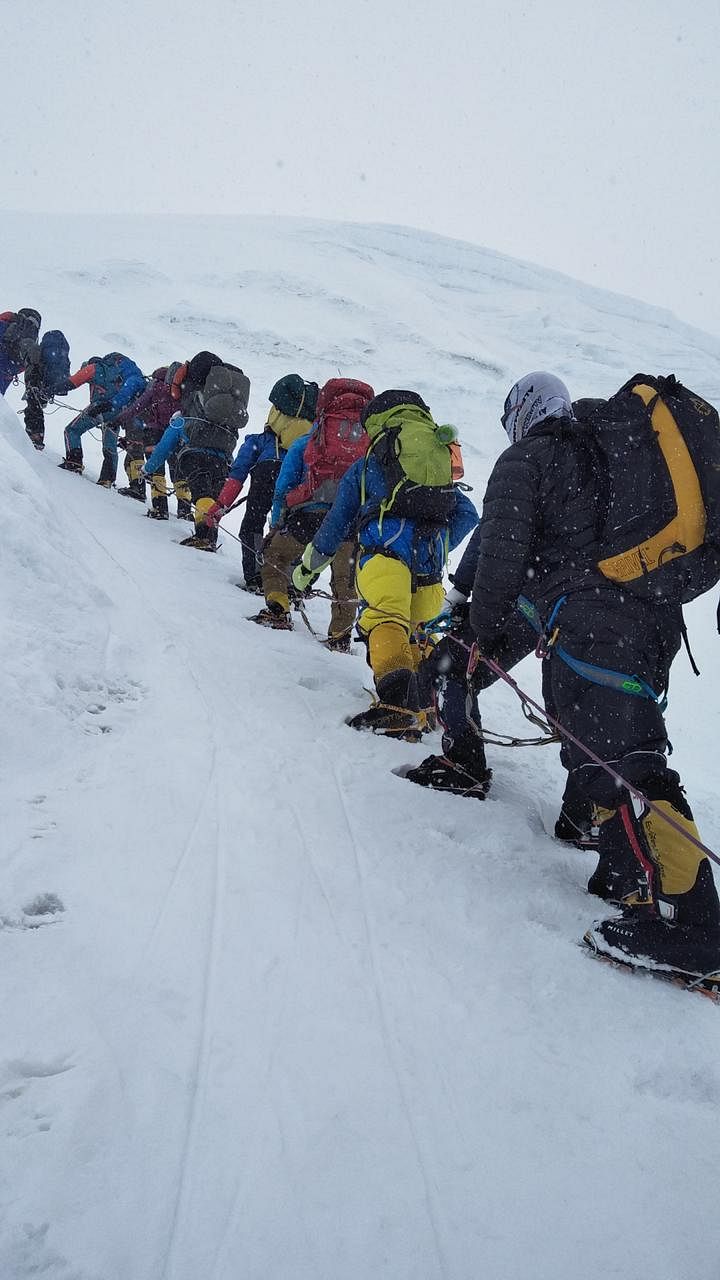
Strong survival instincts
“Reaching the summit is only half the job… The real challenge is to descend, I realised this when I saw a fellow climber rappelling down the second-step section, which is a 120-feet rocky wall, tumble a couple of feet, and turn upside down,” he added.
“His legs got entangled in the ropes and the oxygen mask fell off his face. He was dead within three to four minutes,” Upadhyay said.
Amid these conditions, he added, survival instincts are so strong that people refuse to share life essentials.
“I remember there was a point when I thought I was about to die, but no one offered me water… You are your only hope up there,” he said. “Yes, there is a question of ethics but if you help, chances are you die too,” added Upadhyay.
“There are countless stories of climbers who were saved by sherpas, the true unsung heroes of the mountain,” added Kaushik.
“They sometimes go great lengths just to save the life of their clients,” he said.
Speaking of the help climbers do or do not offer each other, he added, “Sometimes, on a bad day, a bad situation may come where people answer their self needs first, sometimes it’s beyond the scope of one person to go out of their way and risk it all for the second person.”
Also read: A glacial lake in PoK is threatening people, and could mean the Indus river basin is drying
‘The lure is real’
The concerns notwithstanding, Upadhyay told ThePrint that summiting the Everest was an experience he would savour forever.
After failing to get the government or private companies to fund his climb, he organised a fund-raiser for his expedition, which ended up costing him Rs 35 lakh.
And it was all worth it, he said. “On 23 May, at 5 am, I saw the sun rise from below my feet and that was the most magical morning of my life,” he told ThePrint.
“From 8,488 metres, the notion of Earth being round seemed real to me,” he said.
“I know the lure is real, but reaching the most astounding point on Earth is progressively pulling in less experienced climbers served by organisations hungry for business,” he added.
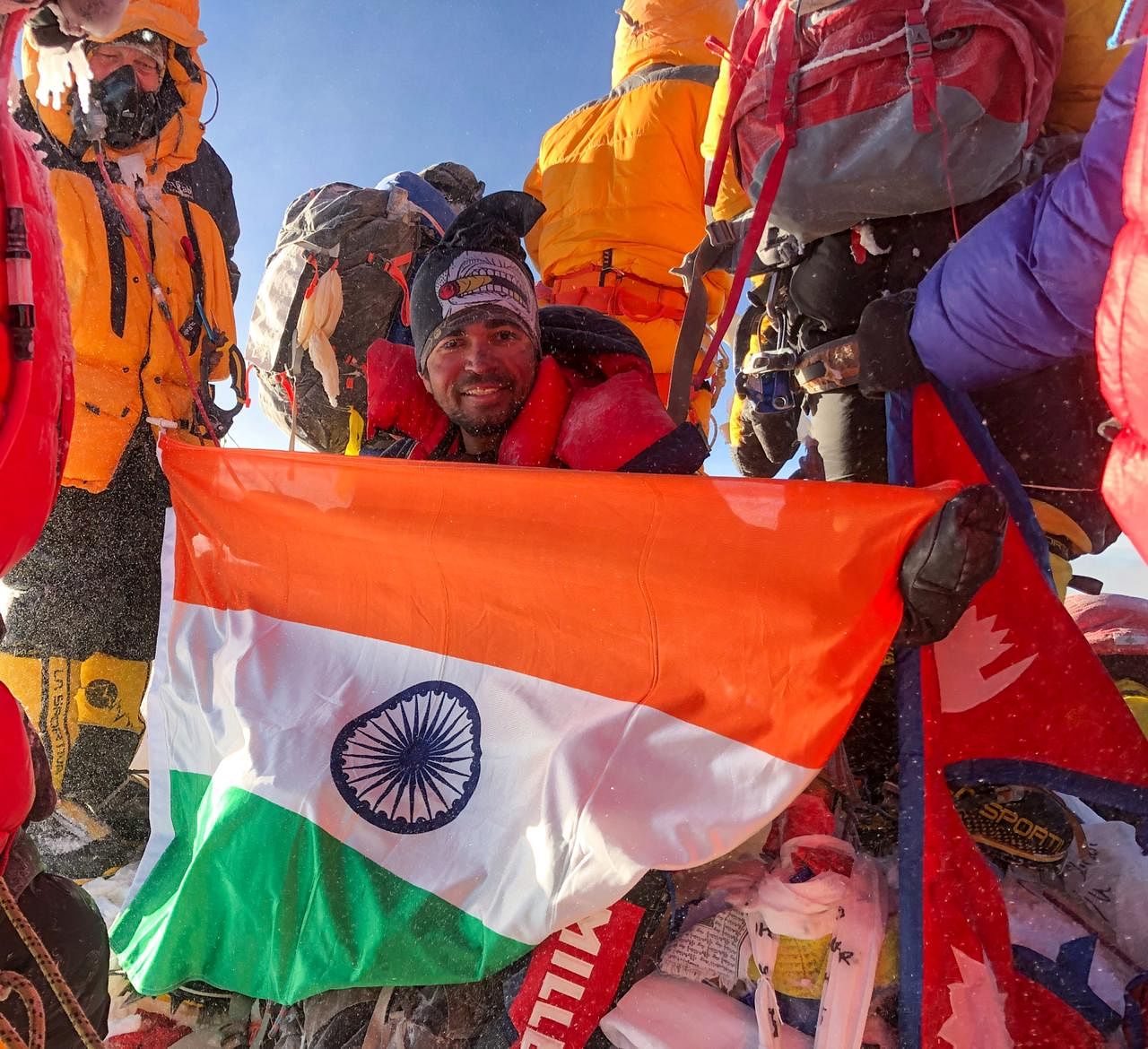
Also read: Everest tourism is causing a mountain of problems every year
This is an updated version of the report.


